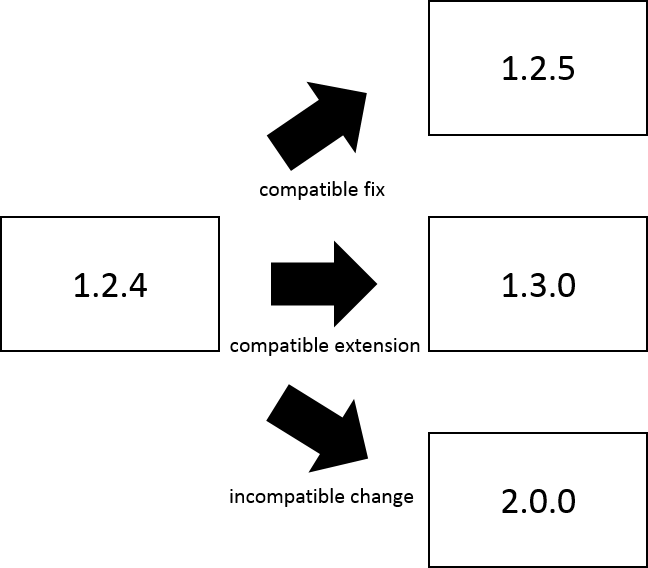Introduction
Semantic versioning is the practice of assigning version numbers based on the severity of the change. For semantic versioning, the Semver used as a versioning standard, and it based on the Conventional Commits.
By using the node library: semantic-release we can automate the whole package release workflow including: determining the next version number, generating the release notes and publishing the package.


In this post, I will explain how we can integrate semantic versioning in the git repository.
Conventional Commits
To be used, semantic release needs commit message to follow a precise pattern. Here is the expected syntax for commit messages.
<type>(<scope>): <subject>
[optional body]
[optional footer(s)]
The commit contains the following structural elements, to communicate intent to the consumers of your library:
fix➜ patches a bug in your codebase[PATCH]feat➜ introduces a new feature to the codebase[MINOR]BREAKING CHANGE➜ (a commit that has a footerBREAKING CHANGE:, or appends a!after the type/scope) introduces a breaking API change[MAJOR]build,chore,ci,docs,style,refactor,revert,perf,test➜ other types thanfixandfeat- footers other than
BREAKING CHANGE: <description>may be provided and follow a convention similar to git trailer format <subject>- succinct description of the change, use the imperative, present tense:changenotchangednorchanges, don’t capitalize first letter, no dot (.) at the end<scope>- We can insert as scope references to our JIRA/GITHUB/GITLAB issues id(XXX-1223)
Enforce Conventional Commits
The automated versioning only work fully when all the team respect these rules. To ensure automated versioning, we need to add some custom hooks in your versioning system.
Remote hooks setup on Github or Gitlab
Github:Configure pre-receive hooks for an organizationGitlab:Set a global server hook for all repositories
Local hooks setup for the conventional commit
- Run following commands in git repository directory
echo "module.exports = {extends: ['@commitlint/config-conventional']};" > commitlint.config.js
echo '{"hooks":{"commit-msg":"commitlint -E HUSKY_GIT_PARAMS"}}' > .huskyrc
- Install
commitlintandhusky:
npm init
npm install --save-dev husky @commitlint/{cli,config-conventional}
- Next
git commitif you don’t follow conventional commit patterns then it will reject the commit.
Semantic Release
- Install node library: semantic-release
npm i -g semantic-release @semantic-release/{git,exec,changelog}
- Create
.releasercin your repository
{
"branches": ["master"],
"plugins": [
"@semantic-release/commit-analyzer",
"@semantic-release/release-notes-generator",
"@semantic-release/github",
"@semantic-release/git",
"@semantic-release/changelog",
["@semantic-release/exec", {
"prepareCmd" : "echo '${nextRelease.version} run your custom shell script'",
"publishCmd" : "echo 'Published.......run your custom shell script'"
}]
]
}
- To run locally in dry run mode from repository
export GITHUB_TOKEN=<token> from https://github.com/settings/tokens (repo Permission)
semantic-release --dry-run
If you want to integrate semantic release with your CICD pipelines visit this documentation.
I have enabled semantic release with Github actions for my maven project factory-parent.
- CI Action Workflows
- Release Artifacts The sample yaml file for Github action workflow to run semantic-release as below:
name: Release
on: [push]
jobs:
release:
needs: build
name: Semantic Release
runs-on: ubuntu-latest
if: github.ref == 'refs/heads/master'
steps:
# check out repository code and setup node
- uses: actions/checkout@v2
- uses: actions/setup-node@v1
with:
node-version: '12.x'
# install dependencies and run semantic-release
- run: npm i -g semantic-release @semantic-release/{git,exec,changelog}
- run: semantic-release
env:
GITHUB_TOKEN: <github_token>
